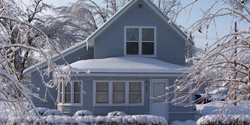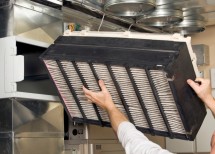Energy Efficiency Lowers Winter Heating Costs
The Alliance to Save Energy News
Energy Efficiency Lowers Winter Heating Costs
Consumers should adopt energy efficiency measures to keep their homes comfortable and their heating bills reasonable this winter as they face higher heating fuel costs and colder temperatures compared with last winter.
The Energy Information Administration (EIA)’s annual Winter Fuels Outlook for October through March projects that natural gas prices will rise 1%, heating oil by 2%, and propane by 4%, while electricity prices will fall by 2%. But combined with “roughly normal winter temperatures east of the Rocky Mountains compared with last winter's unusual warmth,” EIA says the actual outlays for home heating will go up.

Heating Oil – Costs Spiking
Households that use heating oil will be hit the hardest, with a 19% increase in costs over last year – possibly higher than for any previous winter on record, according to EIA. The agency also projects that average household spending for natural gas will increase by 15%, for propane by 13%, and for electricity by 5%.
“Heating costs for many Americans are projected to rise dramatically this winter, primarily because of colder temperatures,” said Alliance Executive Vice President Brian Castelli. “But energy efficiency technologies and practices can reduce those bills while keeping homes comfortable.”
Some Tips Include:
- First and foremost, plug up leaks to the outside. Seal air leaks with sealant, caulking, and weather stripping, and insulate appropriately for your climate to increase comfort, make your home quieter and cleaner, and cut heating costs up to 20%.
- Properly maintain your HVAC system. Just as a tune-up for your car can improve your gas mileage, a semi-annual or yearly tune-up of your heating and cooling system can improve efficiency and comfort. The federal government’s ENERGY STAR website can help you find a qualified contractor.
- Let a programmable thermostat “remember for you” to lower the heat while your home is empty and/or overnight to reduce heating costs up to 10% – and allow you to come home and wake up to a toasty, comfortable house.
-
 Keep furnace filters clean. Check the filter every month, and change it if it looks dirty – or minimally every three months – as a dirty filter slows air flow and makes the system work harder, possibly leading to expensive repairs.
Keep furnace filters clean. Check the filter every month, and change it if it looks dirty – or minimally every three months – as a dirty filter slows air flow and makes the system work harder, possibly leading to expensive repairs. - Consider installing ENERGY STAR-qualified heating and cooling equipment. When replacing equipment, look for a unit that has earned the ENERGY STAR label, the symbol of energy efficiency. Certified gas furnaces in the southern half of the U.S., where homes require less heat, are labeled with a unique “U.S. South” ENERGY STAR logo. They are up to 12% percent more efficient than standard models, saving an average of $36 a year. Certified gas furnaces in the northern half of the U.S. are labeled with the standard ENERGY STAR logo. They are up to 16% more energy efficient than baseline models and can save an average of $94 a year.
- Seal heating and cooling ducts to avoid losing some 20% of the warmed air due to leaks, holes, and poor connections. Sealing and insulating ducts can often pay for itself in energy savings, and a well-designed and well-sealed duct system can make it possible to downsize to a smaller, less costly heating and cooling system that provides better dehumidification.
- Save on the cost of heating hot water – the second highest home energy cost after space heating. Keep the temperature at 120 degrees, and insulate the hot water storage tank according to manufacturer’s directions, without covering the thermostat.
- Open curtains and other window treatments on your west- and south-facing windows during the day to allow sunlight to naturally heat your home, and close them at night.
- Go “window shopping” at www.efficientwindows.org to discover how high-performance ENERGY STAR-labeled windows can cut heating costs by as much as 30% — compared to single-pane windows — increase indoor comfort, and lessen fading of home furnishings.
- Also look for the ENERGY STAR label when replacing or buying appliances, electronics, lighting, and many other types of products to save up to 30% in related electricity bills. See the ENERGY STAR website for more information.
- View Alliance videos illustrating home energy efficiency in action.
Media Contact:
- Michael Timberlake; (202) 448-8758
STAY EMPOWERED
Help the Alliance advocate for policies to use energy more efficiently – supporting job creation, reduced emissions, and lower costs. Contact your member of Congress.
Energy efficiency is smart, nonpartisan, and practical. So are we. Our strength comes from an unparalleled group of Alliance Associates working collaboratively under the Alliance umbrella to pave the way for energy efficiency gains.
The power of efficiency is in your hands. Supporting the Alliance means supporting a vision for using energy more productively to achieve economic growth, a cleaner environment, and greater energy security, affordability, and reliability.
